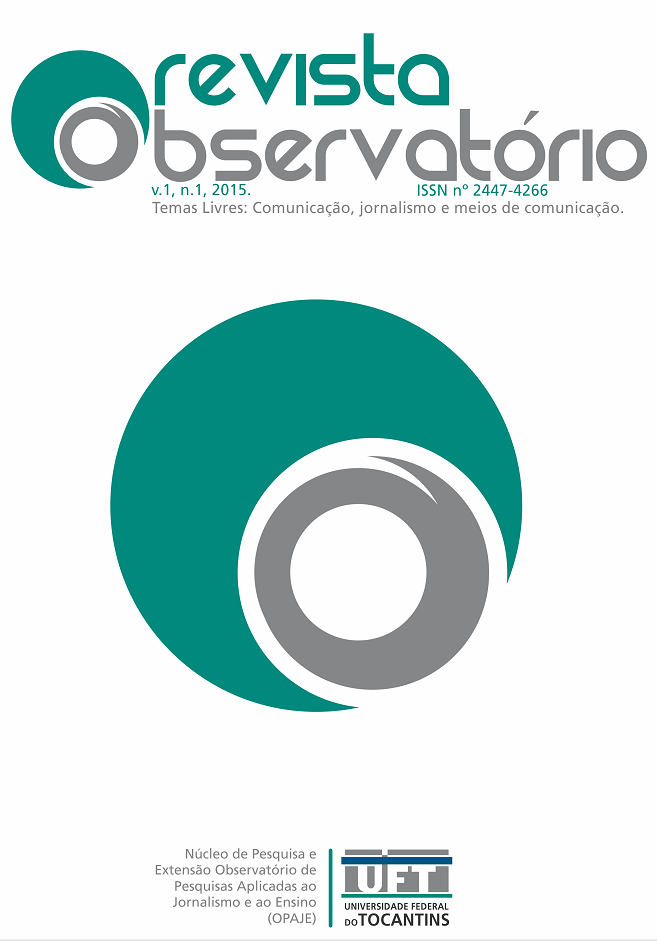Ability to absorb knowledge and communication with the external environment: Analysis in companies of Palmas/TO
DOI:
https://doi.org/10.20873/uft.2447-4266.2015v1n1p123Keywords:
Absorption capacity of knowledge, Knowledge, Communication with the external environmentAbstract
The main objective of this research was to evaluate the absorption capacity of organizational knowledge, having as one of its dimensions communication with the external environment. One quantitative study with a hundred companies belonging to the trade and service sectors has been developed, located in the city of Palmas, TO. The questionnaire involved the use of a range of absorption capacity of the knowledge developed by Matusik and Heeley (2005). The authors estimate that the absorption capacity is made up of multiple dimensions: 1) the company's relationship with its external environment, 2) the structure, routines of knowledge, and the main group of value creation and, 3) absorption of individual skills . The results showed that the surveyed enterprises had a high degree of dominance relationship with the environment.
Downloads
References
COHEN,W. M., LEVINTHAL, D. A. Absorptive capacity: A new perspective on learning and innovation. Administrative Science Quarterly, v. 35: 128-152, 1990.
CRADWELL, D. The Norton history of technology. London: Norton.1995.
FELDMAN, M. S.; PENTLAND, B., T. Reconceptualizing organizational routines as a source of flexibility and change. Administrative Science quarterly, v. 48, n. 1, 94-118, 2003.
FLATTEN, T.; BRETTEL, M.; ENGELEN, A.; GREVE G. A measure of absorptive capacity: Development and validation. Academy of Management Proceedings Volume: 2009, Publisher: Academy of Management, Pages: 1-7, 2009.
GOES, J. B.; PARK, S. H. Interorganizational links and innovation: The case of hospital services. Academy of Management Journal, v. 40: 673-697, 1997.
GREVE, H.R. Exploration and exploitation in product innovation. Industrial and Corporate Change, 1-31, may, 2007.
HUBER, G. P. Organizational learning: The contributing processes and the literatures. Organization Science, v. 2:88-115, 1991.
JANSEN, J.J.P., VAN DEN BOSCH, F.A.J.; VOLBERDA, H.W. Exploratory innovation, exploitative innovation, and performance: Effects of organizational antecedents and environmental moderators. Management Science, v. 52, 1661-74, 2006.
KIM, L. Crisis construction and organizational leanirg: capability bulding in catchinp-up at HyaundayMotor. Organization Science, 9: 506-521, 1998.
KOGUT, B.; ZANDER, U. Knowledge of the firm, combinative capacidades and the replication of technology. Organization Studies, v. 3, p. 383-397, 1992.
KHOJA, F. AND MARANVILLE, S. How do firms nurture absorptive capacity? Journal of Managerial Issues, Vol. 12, No. 2, pp. 262-278, 2010..
LANE, P. J. LUBATKIN, M. Relative absorptive capacity and interorganizational learning. Strategic Management Journal, v.19, n. 5, 461-477. 1998.
LEONARD-BARTON, D. Wellsprings of knowledge: Building and sustaining the source of innovation. Boston: Harvard Business School Press, 1995.
MATUSIK, S.F.; HEELEY, M.B. Absorptive capacity in the software industry: Identifying factors that affect knowledge and knowledge creation activities. Journal of Management, v. 31, n.4, p. 549-572, 2005.
MATUSIK, S. F.; HILL, C.W. L. The utilization of contingent work, knowledge creation, and competitive advantage., Academy of Management Review, v. 23: 680-697, 1998.
NONAKA, I. A dynamic theory of organizational knowledge creation. Organization Science, v. 5: 14-37, 1994.
NONAKA, I. TAKEUCHI, H. The knowledge-creating company: How japanese companies create the dynamics. Oxford: Oxford University Press. 1995.
ROSA, A. C. ; RUFFONI, Janaina . Mensuração da Capacidade Absortiva de Empresas que possuem Interação com Universidades. Economia e Desenvolvimento (Santa Maria), v. 26, p. 80-104, 2014.
ROXAS, B. Clarifying the link between social capital and MSME innovation performance: the role of absorptive capacity, Asia-Pacific social science review, vol. 7, no. 1, pp. 31-51, 2007.
WAHYUNI, S.; SUDHARTIO, L. How to increase local partners' bargaining power and absorptive capacity in joint ventures? Global Management Journal. Vol. 2, n. 1, 86-93, 2010.
ZAHRA, S. A., GEORGE, G. Absorptive capacity: A review, reconceptualization, and extension. Academy of Management Review, v. 27, n. 2, 185-203, 2002.
ZANDER, U.; KOGUT, B. Knowledge and the speed of the transfer and imitation of organizational capabilities: An empirical test. Organization Science, v. 6, n. 1: 76-92, 1995.
Downloads
Published
How to Cite
Issue
Section
License
[PT] Autores que publicam nesta revista concordam com os seguintes termos:
1. Autores mantém os direitos autorais e concedem à revista, sem pagamento, o direito de primeira publicação, com o trabalho simultaneamente licenciado sob a Creative Commons Attribution License (CC BY-NC 4.0), permitindo o compartilhamento do trabalho com reconhecimento da autoria do trabalho e publicação inicial nesta revista.
Leia todos os termos dos direitos autorais aqui.

